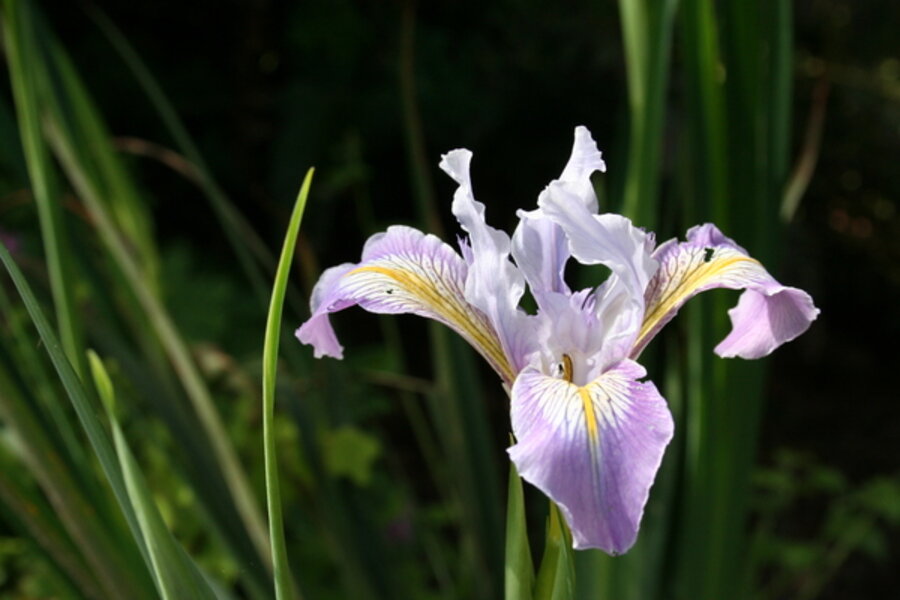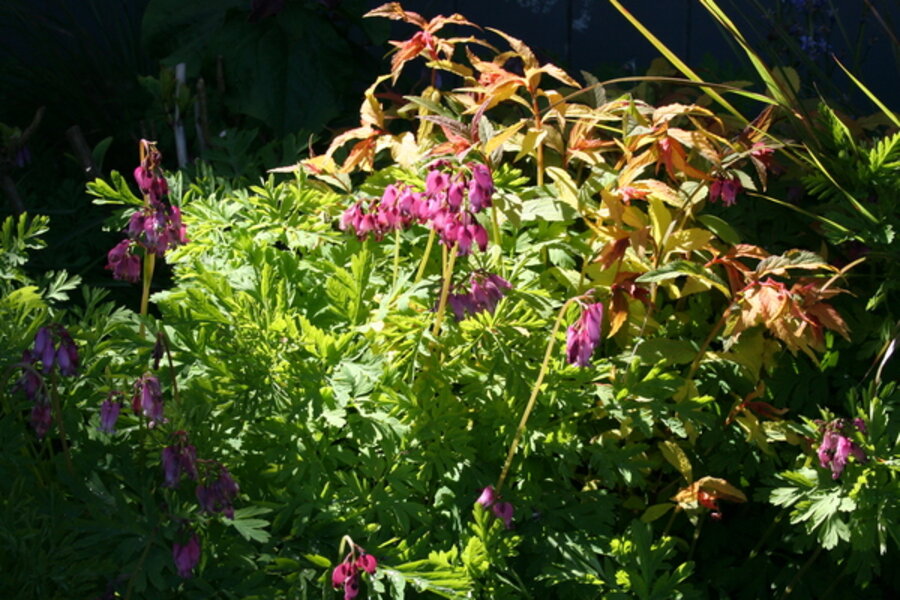Garden design using native plants
Loading...
I've been reading "The New American Landscape: Leading Voices on the Future of Sustainable Landscaping," edited by Thomas Christopher (Timber Press, $34.95), and one of the points that has stuck with me is in Douglas Tallamy's section on welcoming wildlife into the garden through planting native plants.
Tallamy, of course, is a passionate advocate of using native plants in the landscape, and is the author of "Bringing Nature Home."
Why native plants are sometimes rejected
In a discussion in the book about why gardeners are resistant to planting native, Tallamy's wife points out:
"Horticulturists are artists, and their medium is the garden. Their goal is to paint the landscape with beautiful plants, and they have a larger palette to work with if they use plants from all over the globe."
Yes! This is completely true, and it's particularly hard when we've grown to love so very many non-native plants. Exhortations to plant more natives tend to fall on deaf ears, because firstly, we don't always know a lot about native plants and how to use them successfully.
I don't know about you, but the more I learn about a plant, the more I tend to fall in love with it, because I figure out how to show it off to its best advantage.
Another reason gardeners are resistant to planting natives is that we think of using native plants as an all-or-nothing deal. We've developed the false idea that we can either have a boring landscape of natives that looks more like a restoration project than a garden, or have a gorgeous, artful one which uses non-native plants.
The restoration approach can lead to a garden that seems to reject human artistry and contribution. But the other approach is missing a broad spectrum of life, beauty, and regional connection that isn't always obvious at first glance.
Using natives as a design element improves our gardens in so many ways, and gardeners who use natives are tapping into another lens through which to view a garden. We're used to considering color, movement, and texture in the garden. In the same way, using native plants can add a number of important elements to improve your design.
Here's how to think about using natives in your garden in a way that adds to it, rather than taking away:
Natives tap into regional flair
Have you ever visited a new town, and found to your dismay that it had the same chain stores, the same dull landscaping, and the same feel as any number of other places in America? We feel the greatest connection to places that are uniquely their own, and trees and landscaping have as much ability to create a sense of place as do the architecture and businesses in an area.
Why then, do so many of us gravitate towards a gardening style that could occur anywhere? Roses, dahlias, and daisies are lovely plants in a garden, but they do little to convey what is special about your home and your surroundings.
Incorporating some of the plants indigenous to your region brings a unique touch to your garden that helps remind you what's different and interesting about the place in which you live.
Natives attract less-common wildlife
Do you remember how you felt as a child when you saw a butterfly flit past, or a great hairy caterpillar marching along a plant? I'm guessing you don't have to think too hard to remember those feelings, because you probably still get that moment of awe and joy when you see wildlife in your garden today.
Adding native plants increases the number of species that can survive in your garden. There are a number of bird and insect species (including caterpillars, which become butterflies) that can feed only on the plants they've evolved with. By planting natives, you're allowing these species to continue thriving in our urban and suburban landscapes, and you get to enjoy them in your garden.
You're adding plants to your palette, not taking them away. [To get some ideas, scroll through the three photos at the top of the first page. Click on the arrow at the right base of each photo to go to the next one.]
Even the staunchest of native plant allies don't believe you need to give up your favorite non-native plants in order to create big benefits for wildlife. Planting just a few of your local natives can have an enormous impact on the lifecycles of the butterflies and birds that are such a pleasure to watch.
The key is to be mindful in your plant choices, and to learn what native plants are local to you. That way, when you have a space in your garden for a new plant, you can consider whether a native flower or shrub might have the attributes you're looking for, rather than just picking up the first common plant you see at the nursery.
Want to read more about why native plants are important? Check out Douglas Tallamy's book "Bringing Nature Home," and contact your local chapter of the Native Plant Society. They can guide you in learning more about the plants that are special to your region.
Editor's note: See also these related articles here at Diggin' It: Native plants help sustain birds and beneficial insects, Native plants help birds and small wildlife, and Native plants encourage wildlife in the garden.
-----
Genevieve Schmidt is a landscape designer and garden writer in the redwoods of northern California. She shares her professional tips for gardening in the Pacific Northwest at North Coast Gardening, and on Twitter.







